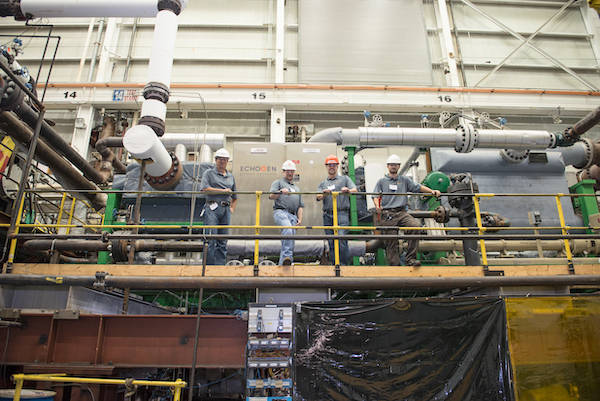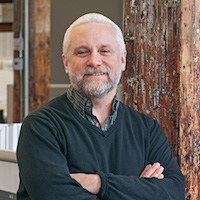Supercritical CO2 Power Cycle and Energy Storage Developments and Commercialization
Power generation systems that use supercritical carbon dioxide (sCO2) as the working fluid are relatively new, but show great promise as solutions for two critical areas of the clean energy revolution: more efficient conversion of thermal energy to electricity, and long-duration electrical energy storage.
Thermal energy conversion is strategically vital, and encompasses applications as diverse as fossil fuel combustion, nuclear power, concentrating solar power (CSP), and industrial waste heat. Supercritical CO2 power cycles have been proposed as far back as the late 1800's, but only in the last 10 to 15 years has substantial progress been made in the development and commercialization of practical systems. In fact, the first commercial deployment of an operable sCO2power system was only recently announced. Because of the lengthy development timeline in nuclear and CSP applications, initial commercialization efforts have been focused on industrial waste heat recovery and sCO2-based combined cycle gas turbines.

The U.S. Department of Energy estimates that 280,000 MW discharged annually in the U.S. as waste heat could be recycled as usable energy to provide 20 percent of U.S. electricity needs. As well as slashing greenhouse gas emissions by 20 percent, and saving USD $70-150B per year on energy costs. The term "waste heat," refers to the thermal energy produced by machines, electrical equipment, and industrial processes that escapes into the environment, unused. Often this waste heat can be recovered and used to generate power with no combustion and no emissions.
The most common uses for waste heat are:
§ Recycling heat back into the existing manufacturing process
§ Transferring the waste heat from one process to another within the facility
§ Converting heat into electrical (or mechanical) power [Waste Heat to Power (WHP) or Waste heat to Mechanical Drive (WH2MD)]
The first two options are generally economical, but require a local use for the recovered heat. The third option creates a product - electrical power - which can be consumed onsite or easily transmitted and has high economic value.
How waste heat to power works
Waste Heat to Power (WHP) creates electricity by heating a fluid at high pressure, then expanding the fluid through a turbine to power an electric generator. In a classic steam Rankine waste heat system, the turbine is turned by a pressurized water vapor (steam), which has been boiled by the waste heat stream. The steam is then cooled off and condensed to liquid water, pumped back to high pressure, and begins the process again. Most WHP systems today are adaptations of the original Rankine design - a system that takes heat from an external source and converts it to power (work) through a closed-loop thermodynamic system.
sCO2 is a superior power cycle fluid
At high pressure, many fluids become "supercritical"-a state where no distinction can be made between liquid and vapor states. Due to its thermophysical properties, sCO2 offers significant advantages over steam and organic fluid-based Rankine cycles. Compared with steam, sCO2 provides higher output power with lower installed cost and lower operation and maintenance costs, which can reduce the levelized cost of energy (LCOE) by up to a 10 to 20 percent. Compared with organic fluids, sCO2 is more thermally stable, lower-cost, less hazardous and more efficient in converting mid- to high-grade heat to power. In addition, sCO2 systems use no water, and can thus operate in cold climates without risk of freezing, and without the significant operations and maintenance expense of water treatment systems. For industrial applications, the self-contained nature of sCO2 heat engines allow autonomous operation without interfering with plant operations.

Usable (waste) heat to power - the existing market opportunity
The greatest potential source for WHP generation is in the industrial sector. In 2009, this sector consumed the largest amount of energy in the United States, accounting for more than 30 percent of all domestic energy consumption. Roughly one-third of this energy consumed by industry is discharged as thermal losses due to inefficiencies.
In the United States alone, it is currently estimated that 6,000 to 8,000 megawatts [MW] of electric generating capacity is available for recovery from industrial operations each year. Non-industrial applications, including exhaust from natural gas pipeline compressor drives and landfill gas engines, represent another 1,000 to 2,000 MW of power capacity, for a total of 7 to 10 gigawatts
Repurposing usable (waste) heat to power represents a critical component of addressing global energy stability and security. The recent introduction of a 26 percent Investment Tax Credit in the US 2021 Consolidated Appropriations Act also provides significant additional economic incentive to implement WHP solutions such as sCO2 power systems.
sCO2 for energy storage
Long-duration (6-100 hours) electrical energy storage will be critical in achieving large-scale implementation of intermittent renewable energy, such as solar PV and wind power. The same characteristics that make sCO2 an excellent power cycle fluid also can be used in a closed-loop energy storage system. During times when power generation exceeds demand, an electrically-driven sCO2 heat pump transfers thermal energy from a low-temperature heat reservoir to a higher temperature reservoir. At times of low electrical generation capacity, the stored thermal energy can be converted back to electrical power with an sCO2 heat engine. By taking advantage of the thermophysical properties of sCO2, ultra-low-cost thermal reservoirs can be used while maintaining high round-trip efficiency. Although still under development, this sCO2 "electro-thermal" energy storage technology offers great promise in this critical application.
 Based in Akron, Ohio, Dr. Timothy Held is Chief Technology Officer of Echogen Power Systems, a waste-heat recovery and energy-storage technology company. He can be reached at: [email protected].
Based in Akron, Ohio, Dr. Timothy Held is Chief Technology Officer of Echogen Power Systems, a waste-heat recovery and energy-storage technology company. He can be reached at: [email protected].
Echogen Power Systems | www.echogen.com
Author: Timothy Held, Ph.D.
Volume: 2021 May/June













.jpg?r=9003)